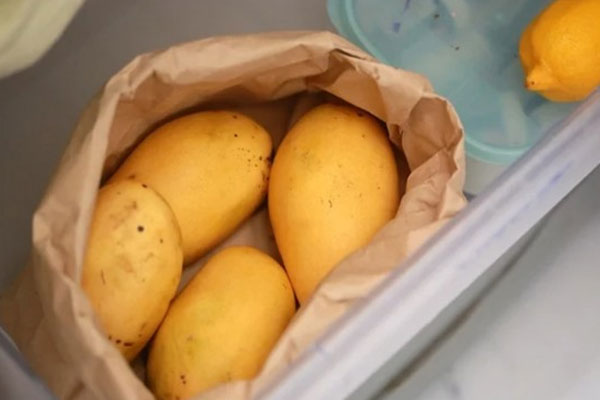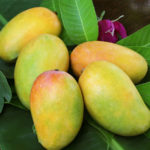Fruit Selection
This step is especially important if you want to store your fruit for an extended period.
Even with the best preservation techniques, low-quality fruit will not retain its freshness and flavor for long.
Each type of fruit requires specific knowledge and selection techniques, but these are the general principles to follow:

Choose fruit that is fresh and undamaged. You can check this by gently squeezing the stem and smelling it. If the stem has a pleasant fragrance and exudes essential oils, the fruit is fresh and free of preservatives.
Select fruit that is golden yellow and firm to the touch. Avoid fruit that is still green and feels soft, as this indicates it was harvested prematurely to prolong its shelf life. Golden yellow, firm fruit is usually riper and sweeter…
Home Storage
After carefully selecting your fruit, wash it thoroughly under running water. Ideally, use a faucet with a strong, thin stream to effectively remove dirt and bacteria from the fruit’s surface.
Soak the fruit in a brine solution for about 5 minutes (avoid prolonged soaking as it can alter the fruit’s natural composition).
Use a soft cloth to gently clean the fruit’s stem, as this is a common entry point for bacteria and mold.
Use a fan to quickly dry the fruit within a few minutes.
Tightly wrap the fruit in plastic bags and store it in the refrigerator’s crisper drawer at around 15°C (59°F).
Storing Unripe Mangos at Room Temperature
Storing unripe mangos at room temperature in a ventilated container will help maintain their delicious flavor without premature spoilage. Using breathable storage containers and plastic bags helps prevent mangoes from spoiling or becoming infested while still allowing the fruit to breathe.
Typically, mangos will ripen within eight days. Therefore, it’s a good idea to check on your stored mangos every couple of days to assess their ripeness.
Long-Term Mango Preservation through Freezing
Chop the Mangos into Small Pieces
If you want to enjoy mangos even after their season has passed, you can preserve them by freezing. Chop the mangos into small pieces and place them in ziplock bags. Most people peel the mangos before freezing, but this isn’t necessary. You can leave the skin on washed mangos or peel them according to your preference.
Place the Mangos in Ziplock Bags and Freeze
After chopping the mangos, place them in ziplock bags, removing as much air as possible before sealing. Then, lay the bags flat in the freezer, avoiding direct contact with the freezer walls to ensure even freezing.
Use the Frozen Mangos within Six Months
Frozen mangos can be stored for up to six months. When you’re ready to enjoy them, simply thaw the mangos at room temperature or in the microwave and use them in your favorite recipes or as a tasty snack.
Source: Health & Beauty Tips


































